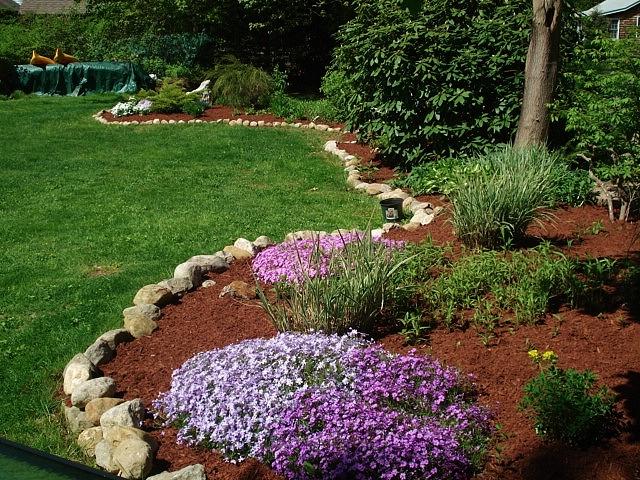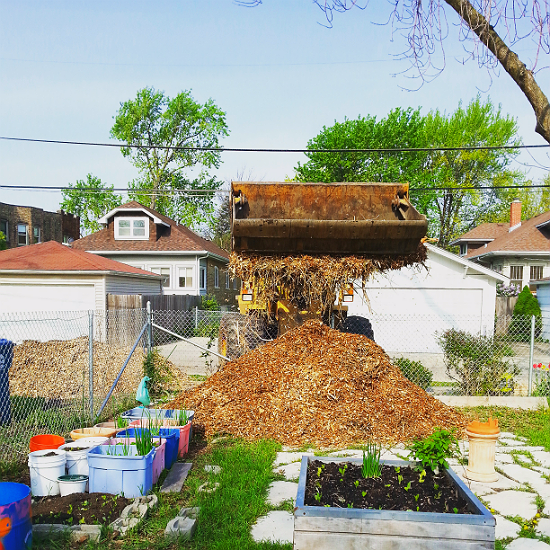Does all the talk about droughts, climate change and water conservation have you wondering how you can lessen how much water your garden uses? Mulching is one of the best things you can do for your garden, but after a visit to the garden center you may be left asking yourself, “what is the best mulch?” Below we’ll give you some information on the best mulch options for your garden.

Photo via Craftsy member ctmeg
Why mulch?
Mulch helps protected your investment in the garden by preventing soil erosion, holding moisture in the soil and saving your time and money by suppressing weeds. If you are deciding between a natural mulch and a synthetic mulch, remember that natural mulches will breakdown over time and contribute to your soil’s fertility.
Types of mulch to consider
1. Shredded bark mulch
Shredded bark mulch is probably the easiest and least expensive of all the mulches available. This mulch is a waste byproduct of the landscape industry. If your city or town offers “free mulch” it is most likely that the mulch comes from trees cut down in your area. Commercial shredded bark mulch will likely contain some cedar, which breaks down slowly. Pine bark nugget mulch can be considered on the opposite end of shredded bark mulch. It’s a nicer quality mulch, but more expensive, and gets easily blown or washed away.
2. Leaf mulch
Leaf mulch is a mulch you can make in your own backyard. In the fall, collect all of the leaves you can and shred them either with your hands or a weed wacker and apply the shredded leaf mulch on your beds. While nothing is cheaper and easier to apply than leaf mulch, it doesn’t last for a long time because leaves decompose rapidly. Similarly, grass clippings can be harvested and applied to your garden beds and container gardens.
3. Straw mulch
If you trust your straw supplier, straw mulch is some of the best mulch that you can add to the garden. It’s as attractive as shredded bark, and longer-lasting than leaf mulch. Just be aware that a straw mulch with a lot of seeds will create more weeds than it will keep down. Straw mulch can be very weedy.
4. Pine needle mulch
Pine needle mulch is a good choice if you grow acid-loving plants like such as blueberries, rhododendrons, azaleas and hydrangeas that change color based on a soil’s pH level. It won’t happen overnight, but regular application of pine needle mulch will increase the acidity of your garden’s soil. So proceed with caution.
5. Inorganic mulch
Let’s put river stones, lava rock and rubber mulch under the category of inorganic mulch since these do not break down like the mulches mentioned above. River stones and lava rock will not fly away like shredded bark, wood chips and leaves, but they will compact in your soil the more they are walked on. If you ever decide you don’t want river stones, pebbles,= or lava rock, it will be very hard to remove stone from your landscape. But in my opinion, walkways and paths look particularly good when covered in river stones and pea gravel, and few things set off a garden like these mulches.

Free mulch being delivered to our community garden.
While this is not an exhaustive list, these five mulch categories are commonly available or can be made from material that is already in your landscape. Deciding on whether you want organic or inorganic mulch can come down to a matter of preference and cost.
At the community garden that I’m a part of, we get free shredded bark mulch from the village that hosts the garden. While I’m appreciative of the free mulch, I can’t help but wonder how much more polished our garden could look if the spaces between the raised beds was covered in pea gravel instead of dusty and sharp pieces of shredded bark mulch. Sometimes the best mulch is the free kind.

Share tips, start a discussion or ask one of our experts or other students a question.
No Responses to “What's the Best Mulch for My Garden?”